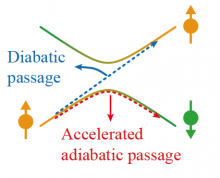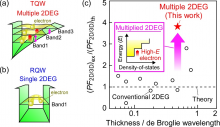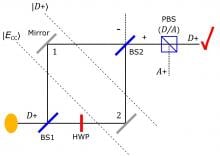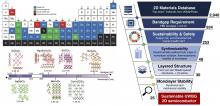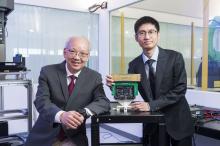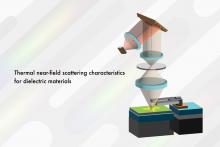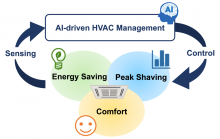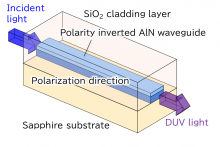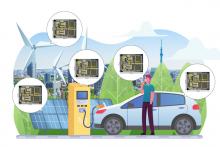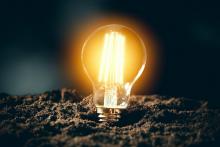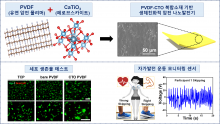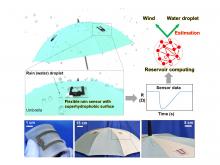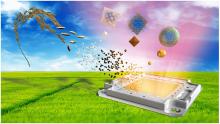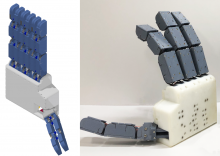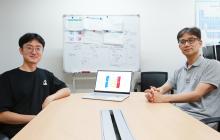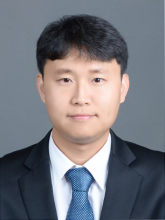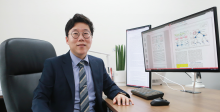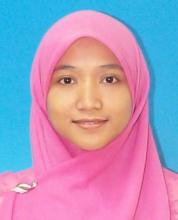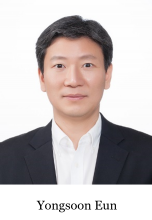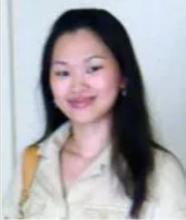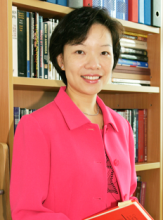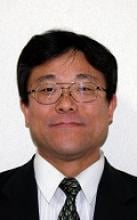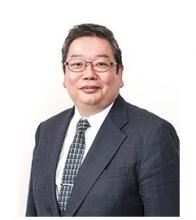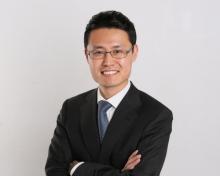Engineering & Technology Electrical Engineering
News
05 Mar 2024
SANKEN researchers achieved the acceleration of adiabatic evolution of a single spin qubit in gate-defined quantum dots for the first time. After the pulse optimization to suppress quasistatic noises, the spin flip fidelity can be as high as 97.5% in GaAs quantum dots. This work may be useful to achieve fast and high-fidelity quantum computing.
13 Feb 2024
AI records rare bird footage, Lighting up IoT and smart cities, Crystal language designs new materials, Detecting toxins with mobile phones, and Dragonfly wings for better aerodynamics. Plus join us for SciCom coffee. Read all in the latest Editor's Choice.
01 Feb 2024
Researchers from Osaka University and IMRA AMERICA demonstrated a 300 GHz-band wireless link that was able to transmit data over a single channel at a rate of 240 gigabits per second. The wireless communication system employs signal generators based on lasers that have ultra-low phase noise in the sub-terahertz band. This rate is the highest so far reported at these frequencies and is a substantial step forward in 300 GHz-band communications for 6G networks.
16 Jan 2024
Researchers from Osaka University and collaborating partners have improved the efficiency of heat-to-electricity conversion in gallium arsenide semiconductor microstructures. By judicious spatial alignment of electrons within a two-dimensional electron gas system with multiple subbands, one can substantially enhance the power factor compared with previous iterations of analogous systems. This work is an important advance in modern thermoelectric technology and will benefit the global integration of the Internet of Things.
15 Jan 2024
Unleashing stem cells from dog urine, Electronic Tongue, Tapping into human motion energy, How neurons network, and A radical use for plastic bags. Plus Communicating science two decades on. Read all in the latest Editor's Choice.
05 Jan 2024
What actually happens is much weirder, and may help us understand more about quantum mechanics
15 Dec 2023
Riding the momentum of the environment-aware agenda, SUTD researchers were part of an international collaboration that developed a sustainable approach to discover and identify materials for next-generation electronics.
14 Dec 2023
A research team led by Professor Chan Chi-hou, Chair Professor of Electronic Engineering at City University of Hong Kong (CityU), achieved an unprecedented advance in antenna technology by making possible the manipulation of all five fundamental properties of electromagnetic waves through software control.
13 Dec 2023
"Amaterasu" particle: a new cosmic mystery, Geckos inspire robotic device, Targeting cancer while protecting healthy cells, Honey, I shrunk the bear, Two species lost to science spotted again. Plus New Science Communication Resources. Read all in the latest Editor's Choice.
07 Nov 2023
Microscopes usually use backscattered radiation to create images, but a research group from the Institute of Industrial Science, The University of Tokyo, is developing an all-new method to study materials using the faint light they emit, generated by heat
03 Oct 2023
Researchers from Osaka University have developed a data-driven AI algorithm for controlling the heating and cooling of an office building. The system does not require ambient sensors or specific knowledge of the building’s rooms. During heating operations, the system was able to achieve energy savings of up to 30%, which can represent significant reductions to cost and environmental impact.
11 Sep 2023
A research team led by researchers from Osaka University created an aluminum-nitride device that can convert visible light into deep-ultraviolet light through the process of second harmonic generation. This work can lead to the development of practical devices that can sterilize surfaces with ultraviolet radiation while using less energy.
04 Jul 2023
A new method for connecting neurons in neuromorphic wetware has been developed by researchers from Osaka University and Hokkaido University. The wetware comprises conductive polymer wires grown in a three-dimensional configuration, done by applying square-wave voltage to electrodes submerged in a precursor solution. The voltage can modify wire conductance, allowing the network to be trained. This fabricated network is able to perform unsupervised Hebbian learning and spike-based learning.
10 Apr 2023
AI finds the first stars ✨were not alone, Auto-switch for large electronic devices, A metabolite against autoimmune diseases, & Converting fruit waste 🍊🍉into solar stills. Plus in our blog: A career worth doing, a life worth living. Read all in the latest Editor's Choice.
23 Mar 2023
Researchers at The University of Tokyo develop a gate driver for circuit bipolar transistor electronic switches with a timing function robust to changes in current and temperature, which can be used in many industrial control applications
23 Mar 2023
Fujitsu and Osaka University’s Center for Quantum Information and Quantum Biology (QIQB) today revealed the development of a new, highly efficient analog rotation quantum computing architecture, representing a significant milestone toward the realization of practical quantum computing. The new architecture reduces the number of physical qubits required for quantum error correction – a prerequisite for the realization of fault-tolerant quantum computing – by 90% from 1 million to 10,000 qubits. This breakthrough will allow research to embark on the construction of a quantum computer with 10,000 physical qubits and 64 logical qubits (4), which corresponds to computing performance of approximately 100,000 times that of the peak performance of conventional high performance computers.
13 Mar 2023
Osaka Metropolitan University scientists succeeded in directly observing how LECs—which are attracting attention as one of the post-organic LEDs—change their electronic state over time during field emission by measuring their optical absorption via lamp light irradiation for the first time. This research method can be applied to all light-emitting devices, including not only LECs but also organic LEDs. This method is expected to reveal detailed electroluminescence processes and lead to the early detection of factors that reduce the efficiency of electroluminescence.
03 Mar 2023
Bacteria living on soil and chicken manure could provide low-tech and sustainable green electricity.
15 Dec 2022
Understanding how bats tolerate viral infections, Material separates water from...water, The virtual sense of touch polished to next level and COVID-19 negatively impacted early-careers and female researchers. Read all in the December's Editor's Choice.
14 Dec 2022
- DGIST Joint Team of Professors Kim Hoe-joon and Hong Seon-ki developed high-efficiency piezoelectric energy harvesting technology using materials harmless to humans
- Attachable to body, generates energy and diagnoses exercise posture... Published in the November issue of ‘Nano Energy’
07 Sep 2022
Crucial to our everyday use the Li-ion battery can be found everywhere. Research at Tohoku University has resulted in a hybrid electrolyte that is both more stable while also retaining excellent conductivity. This will pave the way to a safer polymeric solid electrolyte for Li-ion batteries with a myriad of applications.
23 Jul 2022
Researchers create 'time machine' to study ancestor galaxies, Robotics engineers pay attention to matters of the heart, Custom suits for delivery worms, Tough, light structures with superior impact resistance and Virtual training can reduce stress and anxiety. Read all in the July's Editor's Choice plus op-ed: To boost South Korea’s basic science, look to values, not just budgets, this month's Image & Asia Research News 2022 magazine pick - Better memristors for brain-like computing.
20 Jun 2022
Osaka Metropolitan University scientists detected, for the first time, collective resonance at remarkably high and broad frequency bands. In a magnetic superstructure called a chiral spin soliton lattice (CSL), they found that resonance could occur at such frequencies with small changes in magnetic field strength. The findings suggest CSL-hosting chiral helimagnets as promising materials for future communication technologies.
13 May 2022
The new multi-tasking weather sensor simultaneously measures rain volume and wind speed. Incorporating machine learning to analyze the output data, a single sensor can provide localized weather data in a timely manner, improving disaster preparedness.
28 Apr 2022
Lithium-ion batteries power our everyday products, from laptops to vehicles, because of their safety, longevity, and charging speeds. Yet their production relies on rare metals such as cobalt and nickel. Now, a research group has unearthed a potential method for incorporating more common and cheaper elements as synthesizing electrode materials.
11 Apr 2022
Milling rice to separate the grain from the husks, produces about 100 million tons of rice husk waste globally each year. Scientists searching for a scalable method to fabricate quantum dots have developed a way to recycle rice husks to create the first silicon quantum dot LED light. Their new method transforms agricultural waste into state-of-the-art light-emitting diodes in a low-cost, environmentally friendly way.
16 Mar 2022
Microgravity worms help solve astronaut muscle problems, CO2 recycling and drug development, Remote control of robot hand, Enabling the study of diverse Hepatitis B. Read all in the March's Editor's Choice and even more in the Asia Research News 2022 magazine.
23 Feb 2022
A reimagined robot hand combines strength with flexibility and resilience, sidestepping problems with existing designs.
29 Oct 2021
Scientists demonstrate that diluting high concentration electrolytes can improve the cycling abilities of lithium metal batteries over a wide range of temperatures
25 Oct 2021
Scientists design a novel thermoelectrochemical cell that efficiently converts waste heat into electricity for low-power devices
Events

17 Apr 2023 to 20 Apr 2023
To achieve Net Zero, the governments of the UK and Singapore are targeting ambitious carbon reduction goals, and electromobility has emerged as a key strategy. Now, Newcastle University (UK) and ERI@N (Singapore) are jointly hosting an international event, known as the Electromobility symposium, in Singapore to debate and discuss experiences in implementing land transport electrification in Singapore and the UK, evaluate policy landscapes, and identify successes and obstacles to inform future strategies.
05 Dec 2019 to 06 Dec 2019
The summit will bring together 150 data scientists, analysts, engineers, AI researchers and business executives from a wide range of industries to learn, network and experience the full potential of Big Data and AI.
11 Jun 2019 to 13 Jun 2019
CES Asia 2019 will return to Shanghai June 11-13 as the only industry event focused on the Asia-Pacific market.
Researchers
Philip Chikontwe is a PhD Candidate in the Medical Imaging and Signal Processing Laboratory (MISPL) under the Robotics Engineering department at DGIST.
Sang Hyun Park is an Assistant Professor in the Department of Robotics Engineering at DGIST
Prof. Jeongho Kwak is currently an Assistant Professor at Department of Information and Communication Engineering, DGIST (Daegu Gyeongbuk Institute of Science and Technology),Korea. He is leading the Intelligent Computing & Networking Laboratory (ICNL) at DGIST.
Dr. Siti Fauziah Toha's main expertise in Artificial Intelligence Modelling and Control optimisation of complex systems and its applications.
Prof. Yongsoon Eun's main research interest includes resiliency of control systems, resilient cyber-physical systems, control systems with nonlinear instrumentation, intelligent transportation systems.
Prof. Sunghoon Im's research lies in the areas of computer vision and machine learning, especially in the problem of 3D reconstruction, scene understanding, Image/Video synthesis and vision for new-type sensors.
Assoc Prof Tan leads the Photonics Devices and Systems Group at Singapore University of Technology and Design (SUTD). Her interest lies in experimental optical physics, pertaining to the study of both nonlinear and linear optical phenomena, nanophotonics and quantum optics. One of the potential applications of her research is enhancing the transmission of data via the Internet by improving reliability and lowering costs.
Helen Meng is a Patrick Huen Wing Ming professor of the Department of Systems Engineering and Engineering Management, The Chinese University of Hong Kong.
Director of Tohoku University's Tough Cyberphysical AI Research Center and expert in rescue robotics.
Tetsuo Endoh is a professor and the director of Center for Innovative Integrated Electronic Systems (CIES), Tohoku University, Japan.
Professor in Electrical Engineering at Korea Advanced Institute of Science and Technology (KAIST).
Giants in history
Chinese physicist Xie Xide (19 March 1921 – 4 March 2000) was an influential educator and one of China’s pioneer researchers of solid-state physics.
Charles Kuen Kao (Nov. 4, 1933 to Sept. 23, 2018) was an engineer who is regarded as the father of fibre optics. His work in the 1960s on long distance signal transmission using very pure glass fibres revolutionized telecommunications, enabling innovations such as the Internet.
Rajeshwari Chatterjee (24 January 1922 – 3 September 2010) was the first female engineer from Karnataka in India.


